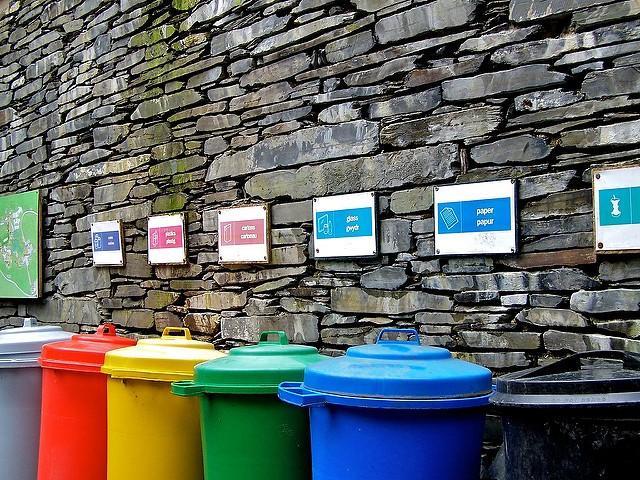
Plastic has increasingly become the storage and packaging material of choice, and its use has risen exponentially since it first become commonplace during the 1950s. Indeed, the wide adoption of plastic has contributed to an improvement in public health, allowed cars to become lighter and more fuel-efficient, and played a critical role in emergencies with the distribution of goods including potable water. But while the plastic industry says it is committed to recycling, and more companies are finding innovative ways to use recycled plastic, the stubborn fact is that municipalities still struggle with the huge streams of plastic waste.
But despite these challenges, the American Chemistry Council (ACC) insists via a sponsored report that plastic has an environmental impact far smaller than alternative materials.
Trucost, a United Kingdom-based consultancy that describes itself as an expert in “natural capital dependency,” said it completed a full overview and life cycle assessment (LCA) that reached several significant conclusions. Among these findings were:
- The cost of using plastic to package consumer goods and food had an overall environmental impact almost four times less than materials such glass, tin, aluminum and paper.
- Plastic materials’ manufacturing and transport account for the greatest environmental costs, which could be reduced with the use of more clean energy, better packaging designs and more efficient transportation fleets.
- The capture of plastic waste before it reaches the world’s oceans could cut the costs of income by $2.1 billion.
- Increasing the recycling of plastic materials to 55 percent (currently those rates are in the signal percentage digits) and slashing landfill disposal to a rate of 10 percent could reduce their environmental costs by almost $8 billion.
- Plastic’s environmental advantages are not uniform across all sectors. While they have a greater benefit in the manufacturing of large goods such as furniture and automobiles, those benefits decrease as they are used in industries such as consumer electronics, food and beverages and household goods. Toy manufactures, according to this study, generate the least environmental benefit out of all sectors this study evaluated.
Finally, the Trucost study argues that despite the downsides of plastic, its environmental costs, especially in the case of more sustainably manufactured plastic, has a far small impact than competing materials. Due largely to production, transportation and disposal costs, the environmental costs of these alternative materials soars to $533 billion. The study, in contrast, claims that all plastic carries an environmental price tag less than half that figure: $237 billion.
But what the study dismisses is the strain plastic has imposed on municipalities tasked with the collection, recycling and disposal of this material. Trucost’s researchers suggest that improved municipal waste collection processes, especially in developing countries, could have a huge role in mitigating plastic’s environmental impact.
Furthermore, the study does not mention extended producer responsibility (EPR) once. And why would it? Advocates for ERP say the burden of collecting, disposal and finding ways to recycle these products should be on the companies that manufacture them instead of on local governments. But food and CPG companies are not having it and instead focus on zero-waste efforts within their supply chains and operations. The two-year slump in oil prices has also hit the recycling industry hard, as there is little incentive to recycle plastic when manufacturing it from virgin material is a far cheaper and easier option.
Furthermore, while one can crunch the numbers and find that plastic may use less energy than other materials such as aluminum, such materials are recycled at much higher rates, with less garbage going to ever-shrinking landfill space here in the U.S. and abroad. The fact is, while only paper products and organic waste take up more landfill space than plastic, the industry infers that consumers and cities, not the industry, should find ways to reduce the streams of plastic finding their way into garbage dumps.
Finally, while the study is based on a methodology that incorporates natural capital valuation techniques, it deserves closer scrutiny when one considers who reviewed the study before its final publication. While one reviewer was from a LCA consultancy, the rest were either from the ACC or the plastic industry. No one from a municipal agency tasked with waste collection, or any environmental group, reviewed the study or its methodology.
The Trucost/ACC study is right in admonishing plastic manufacturers to incorporate natural capital accounting in order to gain a stronger grasp about their products’ environmental impact. But the industry could also be more proactive and work with cities and towns in developing waste diversion solutions in order to cope with society’s affinity for plastic. Whether the industry invests in more recycling programs, works with local governments to implement recycling fees or educates consumers of plastic's impacts, the industry's trade groups need to show more substance and progress than rely on slick public relations campaigns.
Image credit: Dave Goodman

Leon Kaye has written for 3p since 2010 and become executive editor in 2018. His previous work includes writing for the Guardian as well as other online and print publications. In addition, he's worked in sales executive roles within technology and financial research companies, as well as for a public relations firm, for which he consulted with one of the globe’s leading sustainability initiatives. Currently living in Central California, he’s traveled to 70-plus countries and has lived and worked in South Korea, the United Arab Emirates and Uruguay.
Leon’s an alum of Fresno State, the University of Maryland, Baltimore County and the University of Southern California's Marshall Business School. He enjoys traveling abroad as well as exploring California’s Central Coast and the Sierra Nevadas.














